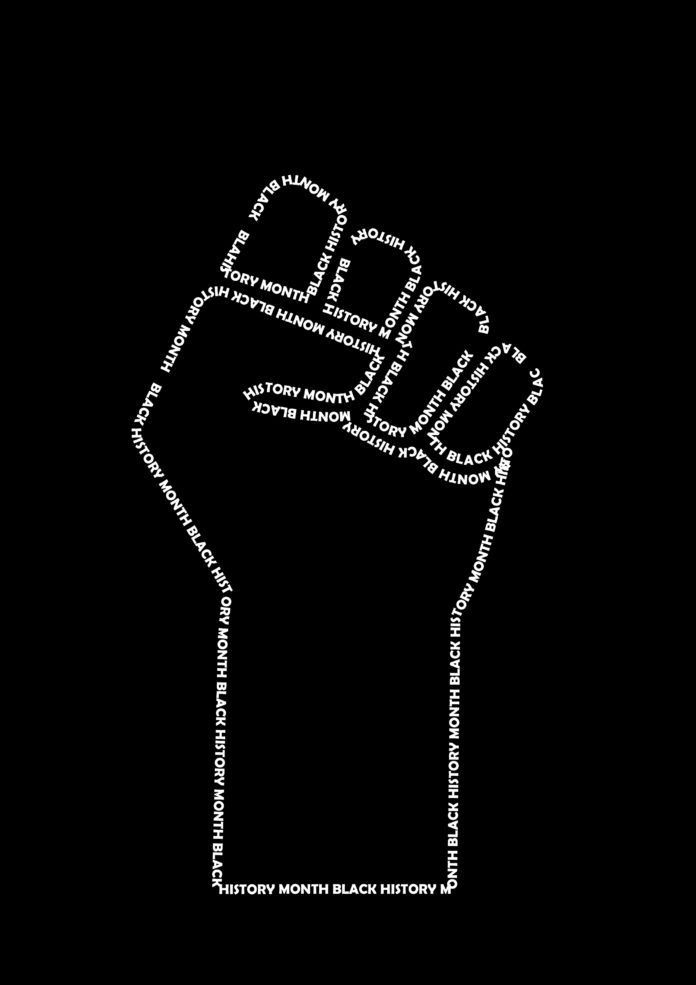CONTENT WARNING: This article contains language that may be offensive to some readers.
February is 28 days long, 29 on a leap year. This is the only time of year that is nationally recognized to celebrate Black history.
The 38th U.S. President Gerald Ford nationally recognized Black History Month (BHM) in 1976, saying this was an opportunity to “honor the too-often neglected accomplishments of Black Americans in every area of endeavor throughout our history.”
The beginnings of Black History Month
In 1924, Carter G. Woodson created Negro Achievement Week in the month of February, which began as a way to celebrate Black history and literature. The choosing of the month was intentional. Woodson said February housed Abraham Lincoln and Fredrick Douglass’s birthdays. Both were monumental figures in furthering Black history.
The Association for the Study of African American Life and History (ASALH) calls the 1920s the “decade of the New Negro” because of the post World War I generation. There was a rise in racial pride and consciousness, and urbanization and industrialization bringing African Americans from the rural south into big cities.
This led to Black history clubs being started, and curriculum was slowly starting to make its way into progressive schools.
The Civil Rights Movement led to Black history being taught as a supplement to American history. The curriculum was starting to enact social change.
ASALH sees these early movements as “[an] intellectual insurgency that was part of every larger effort to transform race relations.”
It was not until the 1960s that the week-long celebration turned into a month. It was not nationally recognized until 1976.
Looking at BHM today
Ursula Payne, interim associate provost and previous Fredrick Douglass Institute director, sees Black History Month as a time to recognize and celebrate the contributions of Black Americans.
“The strategies and aspirations are continuous, they continue 12 months through the year,” Payne said. “But February is a time where we can really anchor ourselves, [be] reflective and we can reinvigorate those commitments.”
BHM allows individuals to reflect on what has happened socially to Black Americans. Payne directly references the increase in homicides of Black women and girls, specifically in Western Pennsylvania.
February is a month where blogs, companies and brands publish content related to Black History Month. This sudden increase in awareness acts as a catalyst to have these conversations throughout the year, according to Payne.
“I feel like one of the values [of] Black History Month is that you get people writing these types of pieces, but then you also have nice conversations that you may not have in another month,” Payne said. “Then they move on to something else, but these things stay with you and it generates this kind of thinking [about bringing awareness].”
Technology and cameras are widely available, and Payne sees this is as a way that conversations are able to keep happening.
The recent killing of Tyre Nichols in Memphis, TN is a recent catastrophe that we can use t observe how video footage has made these issues an ongoing conversation.
ABCNews reports that Nichols died several days after his traffic stop turned violent, which was documented with officer’s body cam footage.
“All of these things that we’re seeing now, and how [it’s] being captured [is] really being projected to the masses,” Payne says. “It’s making us accountable to confront the truth.”
Payne also referenced the War on Drugs and the government’s complacency with drugs coming into the country. This drug war was a detriment to Black communities and is now starting to “trickle into other communities.”
A 2019 statistic from addictioncenter.com showed that 81% of convicted crack offenders were Black.
According to the ACLU, the rapid increase in cocaine usage between 1984 and 1986 had perpetuated myths that were used as justification between crack cocaine and powder cocaine in terms of the law.
Crack cocaine is associated with low income and Black communities and these legal justifications of the drug began to show effects within these communities.
Congress passed the Anti-Drug Abuse Act of 1986, which established that five grams of crack carries a five-year federal prison sentence, and 500 grams of powder cocaine carries the same sentence.
The effects of this bill and the War on Drugs is still being seen in the prison system and in various communities. This history, largely affecting Black Americans is one of the many parts of American history that isn’t talked about in this regard.
“I think we would rather suppress [the truth] because sometimes it is ugly, but when we come together and when white Americans can empathize with other people and supporting [as] allies . . . There is no stopping the levels of transformation that can occur in this country.”
The damage from this bill continues today with U.S. President Joe Biden. His political career began in the early 1970s, and he was a prominent figure in deciding the 1986 bill, serving as the previous chairman of the Senate Judiciary Committee.
During his time in this position, he is quoted in a New York Times article saying the U.S. is not doing enough to put “violent thugs” in prison, as well as warning of “predators on our streets.”
In his 1994 Senate floor speech, he said “‘Law and order with justice’ — whatever that meant. And I would say, ‘Lock the S.O.B.s up.'”
Biden was under intense criticism for his racist policy-making decisions early in his career when running for the 2020 U.S. Presidential Election.
Franklyn Charles, director of The Frederick Douglass Institute at SRU encourages students to be informed about Black history.
“I think the current generation may not be aware of the depth of history and pain caused by these disproportionate bills that were racially motivated,” Charles said. “[Joe Biden] championed [himself] as an advocate of Black people and families, when [he] played a significant role in the destruction of Black communities.”
Educating yourself outside of February
Although February is Black History Month, it doesn’t mean that learning about Black history is only limited to this time. To Charles, being taught about it once is not enough.
“Most people are taught a level of Black history in a segmented and shallow way,” he said. “We learn of emancipation, civil rights, and the first Black president. In all actuality, there is a lot of significant history pre and post emancipation, leading up to Obama’s election.”
He believes there should be more diligent work as a society to ensure that Black history is more than the few topics that are covered in curriculum.
Payne recognizes this truth may be frightening, but it is crucial to recognize what has happened outside most people’s window of knowledge.








